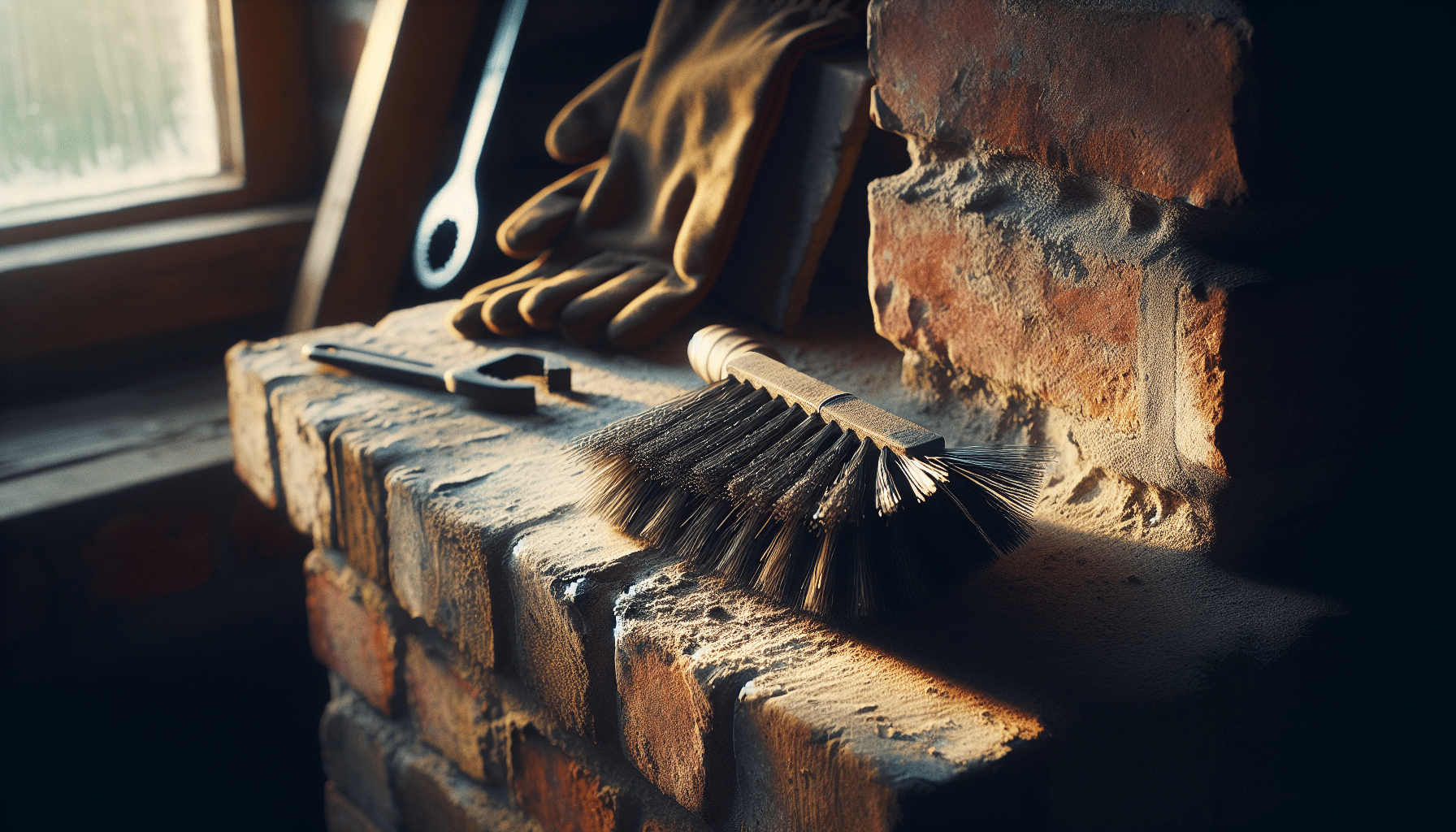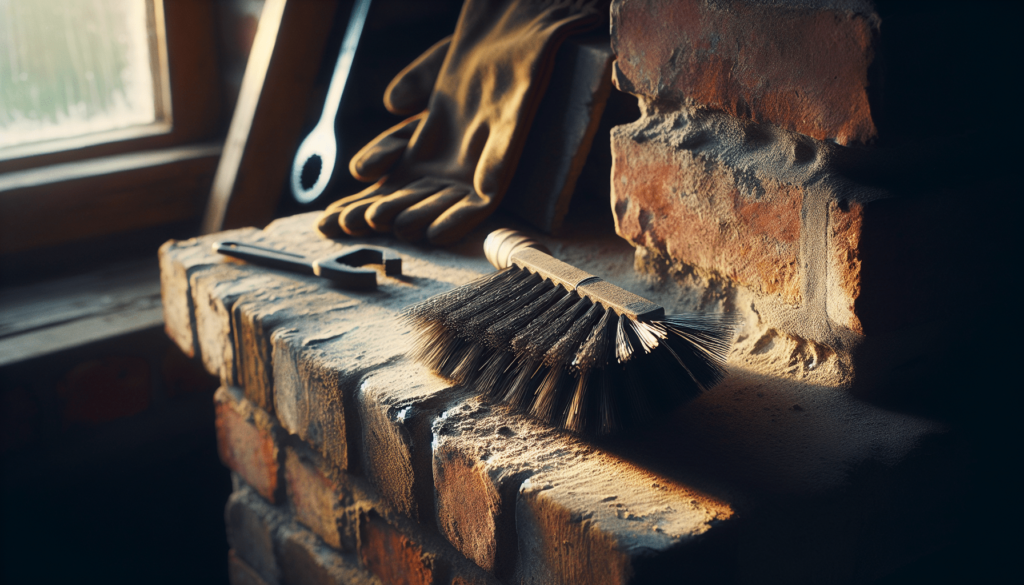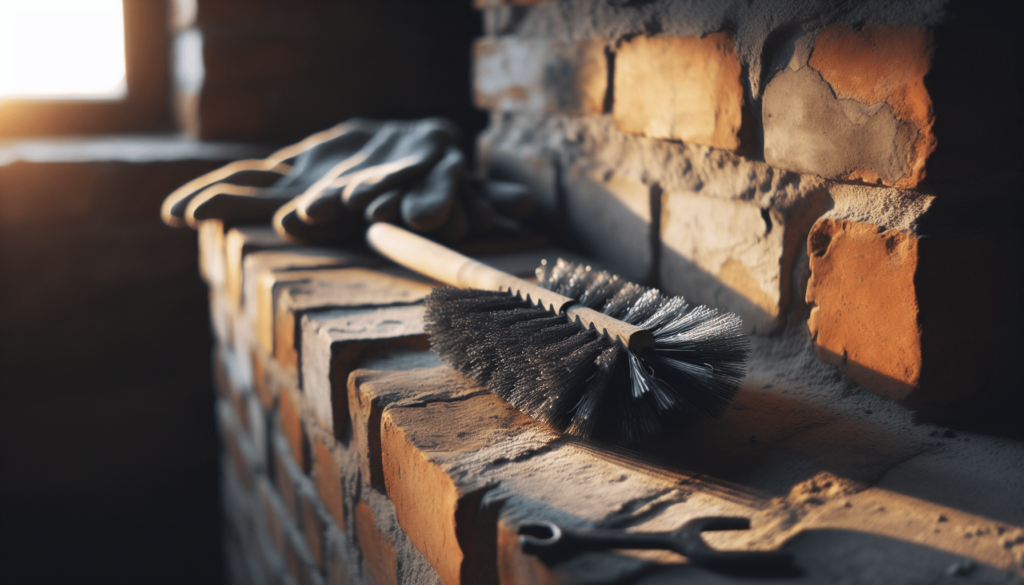
Have you ever wondered how you could improve the efficiency and safety of your oil heater by taking better care of your chimney? Chimneys play a crucial role in ensuring your oil heater runs smoothly, yet they’re often overlooked when it comes to home maintenance. By taking small steps in maintaining your chimney, you can prevent many unforeseen problems. Let’s journey together into the world of chimney care and see how you can get your hands a little dirty, all in the name of home comfort and safety.

Understanding the Importance of Chimney Maintenance
When it comes to keeping your home cozy and warm during those chilly months, your oil heater works tirelessly to provide heat. However, it’s your chimney that safely channels out harmful byproducts, like soot and carbon monoxide, produced during the process. Maintaining it doesn’t just prolong its life but also enhances home safety, preventing risks like chimney fires or dangerous gas build-ups.
The Role of Your Chimney in Home Heating
Think of your chimney as the exhaust system of your heating setup. It not only vent out smoke but also draws in fresh air to keep the fire burning efficiently. If your chimney is clogged or blocked, the communication between indoors and outdoors is hindered, which can lead to inefficiencies in heating and increased risks.
Why Prioritize Chimney Maintenance?
Most people remember their chimney only when something goes wrong. However, regular upkeep ensures your chimney serves its purpose without any hiccups. By preventing blockages and buildups, you ensure your oil heater runs more efficiently, saving you money and maintaining a safer environment for your family.
Assessing Your Chimney’s Condition
Before rolling up your sleeves, it’s essential to determine the current health of your chimney. A periodic inspection allows you to spot issues early on, preventing them from snowballing into significant problems.
Visual Inspection: Your First Line of Defense
Taking a look at your chimney can reveal a lot about its condition. Examine both the interior and exterior without needing specialized equipment. Look for cracks, bird nests, and soot buildup. These are clear signs that some maintenance is due.
When Professional Inspections Are Needed
While you’re more than capable of handling some aspects of maintenance, there are times when an expert’s touch is essential. A certified chimney sweep has the tools and experience to delve deeper into issues, such as identifying subtle structural damage or removing stubborn deposits.
Essential Tools and Materials for DIY Chimney Maintenance
Embarking on your own chimney maintenance mission requires a few basic tools and materials. With the right equipment, challenging tasks become much more manageable.
Must-Have Tools for Chimney Care
You don’t need an arsenal of professional tools, but the essentials include:
| Tool | Purpose |
|---|---|
| Chimney brush | Removes soot and creosote from the flue |
| Extension rods | Reach deeper into the chimney for comprehensive cleaning |
| Safety goggles | Protects your eyes from falling debris |
| Dust mask | To prevent inhalation of soot and dust |
| Flashlight | For better visibility in dark, narrow spaces |
Materials You May Need
In some cases, you’ll need extra materials to ensure thorough cleaning, like a tarp to protect your floors, and a small broom or vacuum to clean up afterwards.

Step-by-Step Guide to Cleaning Your Chimney
Armed with the right tools and a little bit of determination, you’re ready to tackle the task of cleaning your chimney. Don’t worry; it’s simpler than you might imagine.
Preparing the Work Area
Before you dive into the cleaning, you’ll want to safeguard your space. Spread a tarp or old sheet around the fireplace to catch any debris. This not only protects your flooring but also cuts down on cleaning time later.
Removing Soot and Debris
Reach up the chimney with your chimney brush attached to extension rods. Scrape off soot and built-up creosote, starting from the top and working your way down. Take your time, and re-brush areas where significant residue remains.
Inspecting for Creosote Buildup
After cleaning, shine your flashlight into the flue to ensure it’s free of creosote—a highly flammable tar-like substance. Consider replacing or reinforcing bricks and mortar if they show signs of wear.
Addressing Common Chimney Issues
During your maintenance, you might encounter some common troubles. Knowing how to address these keeps your chimney functioning efficiently and safely.
Dealing with Chimney Blockages
Birds and other critters often find chimneys to be ideal nesting spots. A metal chimney cap can prevent such blockages. If already blocked, gently remove any obstruction and clean thoroughly.
Fixing Structural Issues
Minor cracks and mortar damage can escalate over time. Use a chimney sealant or mortar mix to patch small issues. However, large or persisting problems might need a professional touch.
Enhancing Chimney Safety
Safety is as critical as cleanliness when it comes to chimney care. Your chimney may function well, but ensuring it’s safe grants you peace of mind.
Installing and Maintaining Chimney Caps
A chimney cap wards off unwanted guests and protects against moisture intrusion. It’s a small investment for significant protection and, when properly maintained, lasts for years.
Knowing When to Call a Professional
Not every maintenance task is DIY-friendly. If you spot large cracks or experience persistent issues, it might be time to consult a professional. They have the expertise and tools needed for more intensive repairs and inspections.
The Benefits of Regular Maintenance
If routine chimney maintenance seems tedious, think again! The rewards—both tangible and intangible—make this effort well worth your time.
Increased Efficiency and Lower Costs
By regularly removing soot and blockages, your oil heater runs more efficiently, reducing fuel consumption. This not only translates into lower energy bills but also a longer lifespan for your heating system.
Enhanced Safety and Comfort
A well-maintained chimney ensures harmful gases like carbon monoxide are effectively vented out, providing a safer living environment. The risk of chimney fires is also drastically reduced, making your home a haven of warmth and security.
Encouraging Habits for Ongoing Chimney Care
Adopting a proactive approach to chimney maintenance is simpler than it sounds. With just a few easy habits, you can keep your chimney in top shape year-round.
Regular Dusting and Cleaning
Getting in the habit of light cleaning—like dusting around the fireplace—keeps debris from accumulating. When built-up grime or residue isn’t a problem, your yearly deep clean is significantly more manageable.
Seasonal Inspections and Clean-Ups
Consider scheduling inspections and cleanings to coincide with the changing seasons. This allows you to prep your chimney for intensive winter use while ensuring everything is still in tip-top shape come spring.
Keeping Track of Maintenance
A simple logbook of your maintenance efforts helps you keep track of what has been done and alerts you to any issues over time. This methodical approach can save you from costly repairs down the line.
Frequently Asked Questions about Chimney Maintenance
A thoughtful approach means recognizing your uncertainties. Here are a few common questions and answers that may add clarity to your chimney upkeep strategies.
How Often Should I Clean My Chimney?
For oil-burning appliances, an annual cleaning before the cold season hits is usually sufficient. However, more frequent inspections might be necessary if you notice performance issues or if your chimney usage is high.
Can I Use Chemical Cleaners?
While chemical cleaners are available and can be effective, nothing replaces a good manual scrubbing when it comes to thoroughness and the environment’s safety. If you choose to use them, follow the manufacturer’s guidelines closely for safety.
What are the Signs My Chimney Needs Repair?
Visible cracks, unusual smoke patterns, and strange odors can be indicators that something isn’t right. In such cases, your safety is paramount, so call in an expert if you’re in doubt.
Enjoying the Fruits of Your Labor
Once you’ve put in the time to tend to your chimney and oil heater, you can sit back and enjoy. The warmth and peace that come from knowing your home is safe indeed is a delightful reward.
Chimney maintenance might be a task you dread or ignore altogether, but with just a bit of effort and care, you’ll find it’s quite manageable. Remember, each step you take towards understanding and maintaining your chimney is an investment in your home’s efficiency, safety, and longevity. So, next time you enjoy a cup of hot cocoa by a crackling, warm heater, take a moment to appreciate the clean, safe routes of warmth winding through your home, courtesy of a clean and well-maintained chimney.
